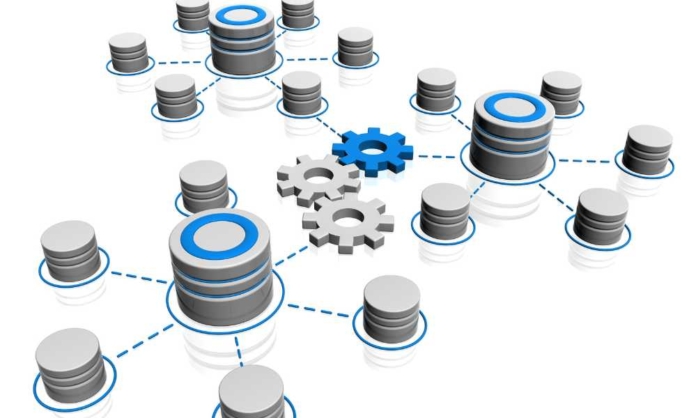You have released an application with an intuitive and user-friendly user interface. But if your application faces a load issue, your end users will become frustrated. Most likely, the issue lies within the database and not the application. 38% of database professionals cited database downtime as the issue that kept them awake at night, according to a poll. The downtime could be caused by various difficulties, such as inappropriate database configuration, inadequate load management, database queries timing out, etc.
This post will explain if scaling your database is necessary and how to address database scalability issues. Let’s start with the most obvious question: why scale databases?
Why Should You Scale Your Database?
Your application database must be able to grow or shrink its computing resources in response to the application’s changing requirements. For instance, your database should be able to grow up to accommodate an unexpected traffic spike. In addition, your database should be able to contract when not in use to conserve resources. Selecting the appropriate database for your needs is one of the most effective ways to assure the scalability of a database. Physical servers make database expansion and contraction difficult. Cloud-based database solutions are effective.
Database scaling is a complex and resource-intensive endeavor. Before beginning the project, you must therefore confirm that your product requires a scalable database. Determine first whether your product will have a traffic boost in the near future. If you still need to, you can still use your previous database.
There is no purpose in investing resources in getting a scalable database for a new business. You may do so after your application reaches critical mass and you anticipate a substantial increase in traffic.
Here are a few instances where database scalability is required:
- Your application has become obsolete, and you wish to migrate to a cloud-based platform.
- Your application is extremely busy with High loads.
- Your application must adhere to the regulations.
- You desire a balanced workload that can service users worldwide.
Database Scaling Solutions
1. Cache Database Queries
Caching database queries is one of the most straightforward techniques to increase your database’s load-handling capability. In most applications, a small number of queries comprise the majority of requests. You can cache such queries so they are read from the cache in the future. This removes the requirement to retrieve data from the database for such frequent requests. The user is instantly provided with the required info. Caching enhances the performance of your database in this manner.
Amazon ElastiCache is a caching service that facilitates database caching. With Amazon ElastiCache, in-memory caching may be scaled. ElastiCache from Amazon provides real-time use cases. The following are ideal Amazon ElastiCache usage cases:
- Gaming ranking lists
- Analytics
- Streaming
2. Database Indexes
Scaling a database does not always involve adding additional databases to the present configuration. Occasionally, by optimizing the current database, it may be possible to scale it. Database indexing comes into play at this point. Using the database indexing method, you arrange the data to increase the speed of data extraction from the database table.
3. Data Replication
Data replication is the process of creating identical copies of a database on several devices. A replication technique is advantageous for dealing with peak loads. As data is duplicated, queries can be distributed across numerous databases, reducing the burden on a single database. Moreover, in the improbable event that a storage device fails, the copied data will be helpful and the system will continue to operate normally.
4. Sharding
An incorrectly constructed database is one of the most significant barriers to scaling your database. To avoid this bottleneck, selecting the proper database for the appropriate business application is vital. For instance:
A bank should select a relational database management system to guarantee its structured data ACID (atomicity, consistency, isolation, and durability).
A multiplayer online game can utilize a key-value database without SQL.
Regardless of the database you use, ensure that it supports sharding. Sharding is the process of dividing a single large database chunk into smaller pieces of data, known as shards, that can be kept across several databases. Two types of sharding exist:
- Horizontal sharding
- Vertical sharding
When database queries produce a subset of rows of data, horizontal sharding is advantageous. Typically, these rows are grouped together. For instance, the queries that filter the data are based on narrow date periods.
Vertical sharding is advantageous when database queries return a subset of columns. For example, if some database queries require only names while others require only cities, vertical sharding is effective.
Shards offer two significant benefits:
The total storage capacity of the system is directly proportional to the number of database shards.
Even if one shard is offline, the shard pool can still retrieve and store your data. When a shard is offline, only a fraction of the entire dataset is currently unavailable. Therefore, it will not significantly affect the system’s operation.
Conclusion
The database is an indispensable component of any program. If you wish to scale your application, you must also grow your database. In recent years, technology breakthroughs have provided us with all the necessary tools to make the scaling process effortless. One can utilize cloud-based services like AWS, Azure, or Google Cloud to grow an application.
Before delving into scalability, one must examine several factors. This article should have helped you understand the core difficulties related to scalability and how to address them. Please let me know if I have overlooked any key points in the section below.

